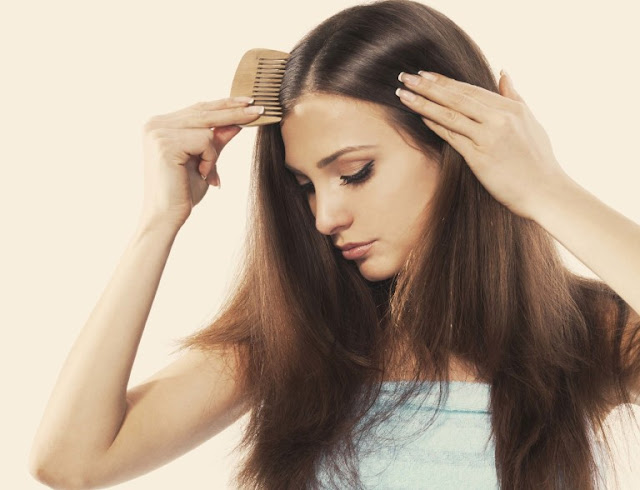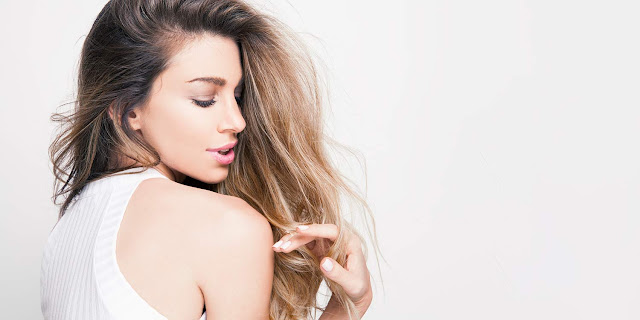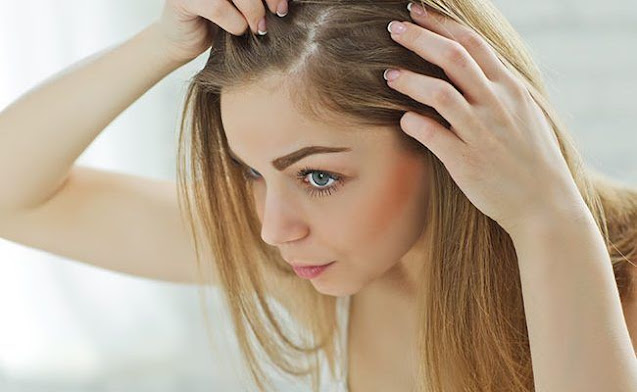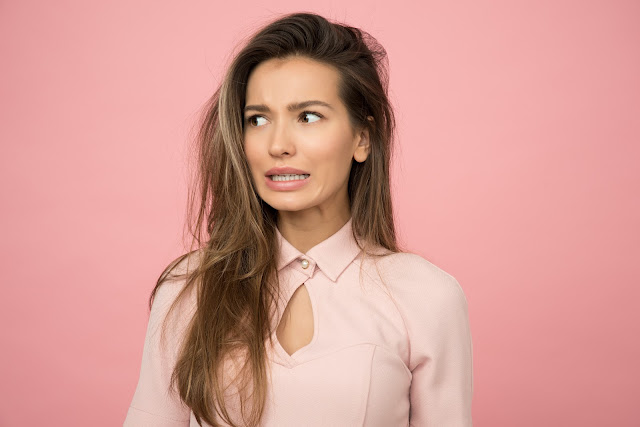What is Dandruff Caused by?
Dandruff is a chronic scalp condition marked by itching and an excessive flaking of the scalp. While not serious, it can be an embarrassing and nagging cosmetic problem that affects your self-esteem. With the proper anti-dandruff treatment, the condition can be controlled and managed effectively. For mild cases of dandruff, daily shampooing with a gentle cleanser is all that is needed. For stubborn dandruff, stronger medicated shampoos can be used. In more serious cases, prescription shampoos may be necessary.
Dandruff affects a lot of people, especially women. When it comes to dandruff, most people focus on the flakes. Itching may be the most uncomfortable side effect. So what exactly is your scratchy scalp trying to tell you? An itchy scalp and flakiness are the hallmark signs of this condition, but it may also cause other symptoms like greasy patches on the scalp and tingling skin.
Underlying causes of dandruff include dry skin, seborrheic dermatitis, sensitivity to hair products and the growth of a specific type of fungus that lives on the scalp.
While there are plenty of over-the-counter products designed to treat dandruff, natural treatments can be just effective. Find out on the most common symptoms of dandruff and ways to get your scalp healthy again.
Dandruff typically looks like dry, fine flaky skin on the scalp, sometimes with areas of pink or red inflamed skin.
Dandruff is seen in all ages from babies to the elderly. In infancy, scalp dandruff is commonly known as "cradle cap." In the teen years, it has been called "druff" for short.
Dandruff is a very common skin condition that nearly all people experience at some point in their lives regardless of age or ethnicity. It affects not just the scalp, but also the ears, eyebrows, sides of the nose, beard, and less commonly, the central (often hair-bearing) part of the chest.
Severe dandruff may be a very difficult and frustrating condition. An ongoing combination treatment of shampoos, washes, and creams and lotions may be required to treat resistant cases. Overall, dandruff treatments are very safe and effective.
Other names for dandruff are seborrheic dermatitis and seborrhea.
Underlying causes of dandruff include dry skin, seborrheic dermatitis, sensitivity to hair products and the growth of a specific type of fungus that lives on the scalp.
While there are plenty of over-the-counter products designed to treat dandruff, natural treatments can be just effective. Find out on the most common symptoms of dandruff and ways to get your scalp healthy again.
Facts about Dandruff
Dandruff can affect any hair-bearing area or an area with even very small hair follicles.Dandruff typically looks like dry, fine flaky skin on the scalp, sometimes with areas of pink or red inflamed skin.
Dandruff is seen in all ages from babies to the elderly. In infancy, scalp dandruff is commonly known as "cradle cap." In the teen years, it has been called "druff" for short.
Dandruff is a very common skin condition that nearly all people experience at some point in their lives regardless of age or ethnicity. It affects not just the scalp, but also the ears, eyebrows, sides of the nose, beard, and less commonly, the central (often hair-bearing) part of the chest.
Severe dandruff may be a very difficult and frustrating condition. An ongoing combination treatment of shampoos, washes, and creams and lotions may be required to treat resistant cases. Overall, dandruff treatments are very safe and effective.
Other names for dandruff are seborrheic dermatitis and seborrhea.
Several Causes of Dandruff
The exact cause is unknown, but various factors increase the risk. It is not related to poor hygiene, but it may be more visible if a person does not wash or brush their hair often.Irritated, oily skin or seborrheic dermatitis. One of the most frequent causes of dandruff, is marked by red, greasy skin covered with flaky white or yellow scales. Seborrheic dermatitis may affect your scalp and other areas rich in oil glands, such as your eyebrows, the sides of your nose and the backs of your ears, groin area, breastbone (sternum), and sometimes your armpits.
Irritated and oily skin.
This can be caused by conditions such as seborrheic dermatitis. It is marked by red and greasy skin that is covered in flaky white or yellow scales.
The condition can affect your scalp and other areas of the body which are rich in oil glands, such as the creases around your nostrils, the backs of your ears, the groin and armpits.
Medical conditions.
Medical conditions.
Adults with Parkinson’s disease and some other neurological illnesses are more prone to dandruff and seborrheic dermatitis. Between 30 and 83 percent of people with HIV have seborrheic dermatitis, compared with 3 to 5 percent in the general population.
Patients who are recovering from a heart attack or a stroke and those with a weak immune system may be more prone to dandruff.
The extra skin cells die and fall off, making them appear white and flaky in your hair or on your clothes. Why malassezia irritates some scalps isn't known.
Shampooing and skin care products.
Patients who are recovering from a heart attack or a stroke and those with a weak immune system may be more prone to dandruff.
The extra skin cells die and fall off, making them appear white and flaky in your hair or on your clothes. Why malassezia irritates some scalps isn't known.
Shampooing and skin care products.
Certain hair care products can trigger a red, itchy, scaling scalp. Frequent shampooing may cause dandruff, as it can irritate the scalp.
Not shampooing enough can cause a buildup of oil and dead skin cells, leading to dandruff, but evidence is lacking that this is true.
Stress.
Not shampooing enough can cause a buildup of oil and dead skin cells, leading to dandruff, but evidence is lacking that this is true.
Stress.
Stress can worsen any skin condition and impair your immune system. Although the microbe malassezia is already present on everyone’s scalp, it can thrive once the immune system becomes compromised or impaired leading to the development of dandruff.
Stress can cause an itch-scratch cycle where the more you scratch the itchier your scalp becomes.
Therefore it is important to incorporate some relaxation methods into your daily routine to reduce stress levels and improve scalp health.
Neurologic and Psychiatric Conditions
Stress can cause an itch-scratch cycle where the more you scratch the itchier your scalp becomes.
Therefore it is important to incorporate some relaxation methods into your daily routine to reduce stress levels and improve scalp health.
Neurologic and Psychiatric Conditions
Parkinson's disease, Alzheimer's disease, epilepsy, traumatic brain injury, and spinal cord injury are among the conditions that elevate one's risk of SD, including dandruff. right up arrow Those with Parkinson's disease, for example, have an impaired autonomic nervous system that helps to control things like oil gland secretions, which can lead to an overproduction that leads to dandruff, according to the American Parkinson’s Disease Association.
A yeastlike fungus (malassezia).
Malassezia lives on the scalps of most adults. But, for some, it irritates the scalp and can cause more skin cells to grow.
Dry skin.
Dry skin.
Flakes from dry skin are generally smaller and less oily than those from other causes of dandruff. And, redness or inflammation is unlikely. You'll probably have dry skin on other parts of the body, such arms and legs, too.
Sensitivity to hair care products (contact dermatitis).
Sensitivity to hair care products (contact dermatitis).
Sometimes sensitivities to certain ingredients in hair care products or hair dyes can cause a red, itchy, scaly scalp.
A type of dandruff called cradle cap can affect babies. This disorder, which causes a scaly, crusty scalp, is most common in newborns, but it can occur anytime during infancy.
Dandruff Symptoms
For most women dandruff symptoms are easy to spot: white, oily-looking flakes of dead skin that dot your hair and shoulders, and a possibly itchy, scaly scalp. The condition may worsen during the fall and winter, when indoor heating can contribute to dry skin, and improve during the summer.A type of dandruff called cradle cap can affect babies. This disorder, which causes a scaly, crusty scalp, is most common in newborns, but it can occur anytime during infancy.
Dandruff doesn't Always Comes from Having a Dry Scalp.
If your skin is dry or you’re dealing with a contact dermatitis reaction that results in dry skin, it can definitely cause flaking, itchiness, and even skin peeling. But having an oily scalp can be a major factor too. That’s because Malassezia yeast—those that are linked to seborrheic dermatitis—feed on the oil on your skin and scalp. They thrive when there’s more of it present, making this condition more likely when you have an oilier scalp. To appropriately treat your dandruff, it’s important to know whether your scalp tends to be oily (or have a lot of product buildup on it) or on the dry side
Simple Treatments to Get Rid of Dandruff Naturally
Use Coconut Oil Coconut oil have multiple health benefits, it is often used as a natural remedy for dandruff.
Coconut oil may help improve skin hydration and prevent dryness, which can worsen dandruff.
A small research of 34 people showed that coconut oil was as effective as mineral oil in improving skin hydration.
A small research of 34 people showed that coconut oil was as effective as mineral oil in improving skin hydration.
Coconut oil could aid in the treatment of eczema, a skin condition that may contribute to dandruff.
One study compared the effects of coconut oil and mineral oil on atopic dermatitis, a type of eczema characterized by itching and inflammation.
Applying coconut oil to the skin for eight weeks reduced symptoms by 68%, compared to just 38% in the mineral oil group.
The potential antimicrobial properties of coconut oil may improve skin hydration and reduce symptoms of eczema and dandruff.
Minimize Stress Levels
Stress can impact many aspects of health and well-being. It can influence everything from mental health to chronic condition.
Stress itself doesn’t cause dandruff, it can aggravate symptoms like dryness and itching
Sustaining high levels of stress long-term may suppress the activity of the immune system.
A weakened immune system can reduce your body’s ability to fight off some of the fungal infections and skin conditions that contribute to dandruff.
One of the most common causes of dandruff, showed that the majority of dermatitis episodes were preceded by a stressful life event.
To keep stress levels under control, try some stress reduction techniques, such as yoga, meditation, deep breathing or aromatherapy.
Stress can weaken the immune system and decrease the body’s ability to fight off infections that cause dandruff. Stress also often precedes episodes of seborrheic dermatitis, one of the most common causes of dandruff.
Try Tea Tree Oil
Ttea tree oil has been used to treat ailments ranging from psoriasis. to acne.
It is also proven to have powerful anti-microbial and anti-inflammatory properties, which may help alleviate symptoms of dandruff.
In fact, tea tree oil is effective at fighting the specific strain of fungus that can cause both seborrheic dermatitis and dandruff.
Another 4-week study examined the effects of tea tree oil on dandruff by treating 126 people daily with a shampoo containing either 5% tea tree oil or a placebo.
At the end of the research, tea tree oil reduced the severity of symptoms by 41% and improved greasiness and itchiness.
Tea tree oil can cause irritation in those with sensitive skin. It’s best to dilute it by adding a few drops to a carrier oil like coconut oil before applying it directly to the skin.
Tea tree oil has anti-microbial and anti-inflammatory properties that may help reduce the severity and symptoms of dandruff.
Apply Aloe Vera
Aloe vera is a type of succulent that is frequently added to skin cosmetics, ointments, and lotions.
When applied to the skin, aloe vera is believed to help treat skin conditions like burns, psoriasis and cold sores. .It may also be beneficial in the treatment of dandruff.
The antibacterial and antifungal properties of aloe vera could help protect against dandruff.
Similarly, a test-tube research found that aloe vera was effective against several species of fungi and may help control fungal infections that cause hair loss from the scalp.
Test-tube studies have also found that aloe vera can reduce inflammation, which may relieve symptoms. Despite these promising results, additional test are needed to look at how aloe vera may directly affect dandruff.
Aloe vera has antibacterial and antifungal properties. As a result, aloe vera may help reduce inflammation and decrease dandruff symptoms.
Antidandruff shampoos
Antidandruff shampoos can be helpful. Some anti-dandruff shampoos instruct daily use and are mild enough to be used on a daily whereas others may be recommended for use once or twice a week only.
These types of shampoos contain active ingredients which are indicated on the back of the packaging. Anti-dandruff shampoos should be used for at least one month so that results are visible, unless there is an adverse reaction, as the scalp requires time to replenish the normal cells.
Try Aspirin
Salicylic acid is one of the primary compounds found in aspirin that is responsible for its anti-inflammatory properties.
In addition to being found in aspirin, salicylic acid is also found in many anti-dandruff shampoos.
Salicylic acid works by helping get rid of scaly skin and loosening flakes so that they can be removed.
Research found, 19 people with dandruff used two shampoos containing either piroctone olamine combined with salicylic acid or zinc pyrithione.
Both shampoos were able to decrease dandruff after 4 weeks, but the shampoo containing salicylic acid was more effective in reducing the severity of scaling.
Another study showed that a shampoo containing salicylic acid was similarly effective as a prescription medication in treating seborrhoeic dermatitis and dandruff.
For an easy dandruff treatment, try crushing two tablets of aspirin and adding the powder to your shampoo before washing your hair.
Aspirin contains salicylic acid, an ingredient found in many anti-dandruff shampoos. Salicylic acid has been shown to be effective in the treatment of seborrhoeic dermatitis and dandruff.
Add Apple Cider Vinegar to Your Routine
Apple cider vinegar has been associated with a variety of health benefits. These include improving insulin sensitivity and increasing weight loss.
Apple cider vinegar is also often used as a natural remedy to get rid of dandruff.
The acidity of the vinegar is stimulate the shedding of dead skin cells on the scalp.
Apple cider vinegar is also balance the pH of the skin to reduce the growth of fungus and thus fight dandruff.
Many of the benefits of apple cider vinegar for dandruff are based on anecdotal evidence.
Apple cider vinegar and its compounds can prevent the growth of certain types of fungus.
If you’d like to give apple cider vinegar a try, add a few tablespoons to your shampoo or combine it with other essential oils and spray directly onto hair.
Apple cider vinegar is said to help remove dead skin cells and balance the pH of the scalp. It may prevent the growth of certain types of fungus.
When to See Your Specialist
If your scalp becomes red or swollen, or your itch isn’t letting up, make an appointment with your specialist. Check in as well if shampoos don’t help, redness and flaking spreads to your face or other areas on the body, you see lice or nits in your hair, or the itching starts to interfere with your everyday life.Many cases of dandruff can be treated effectively with over-the-counter shampoos and other lifestyle measures. That being said, dandruff isn’t the only reason you may have an itchy scalp. If your dandruff is particularly stubborn or itchy, you may have psoriasis, eczema, or a true fungal infection. Your specialist can help.
Summary
Finding flakes in your hair is an incredibly common issue, but many people don’t realize what causes dandruff in their hair or on their scalp—or the best way to deal with it.
While dandruff can be annoying and embarrassing at times, it usually doesn’t indicate a more serious health issue. The itching and flaking often respond well to OTC shampoos and treatments. Keep trying different brands and types until you find something that works for you.





